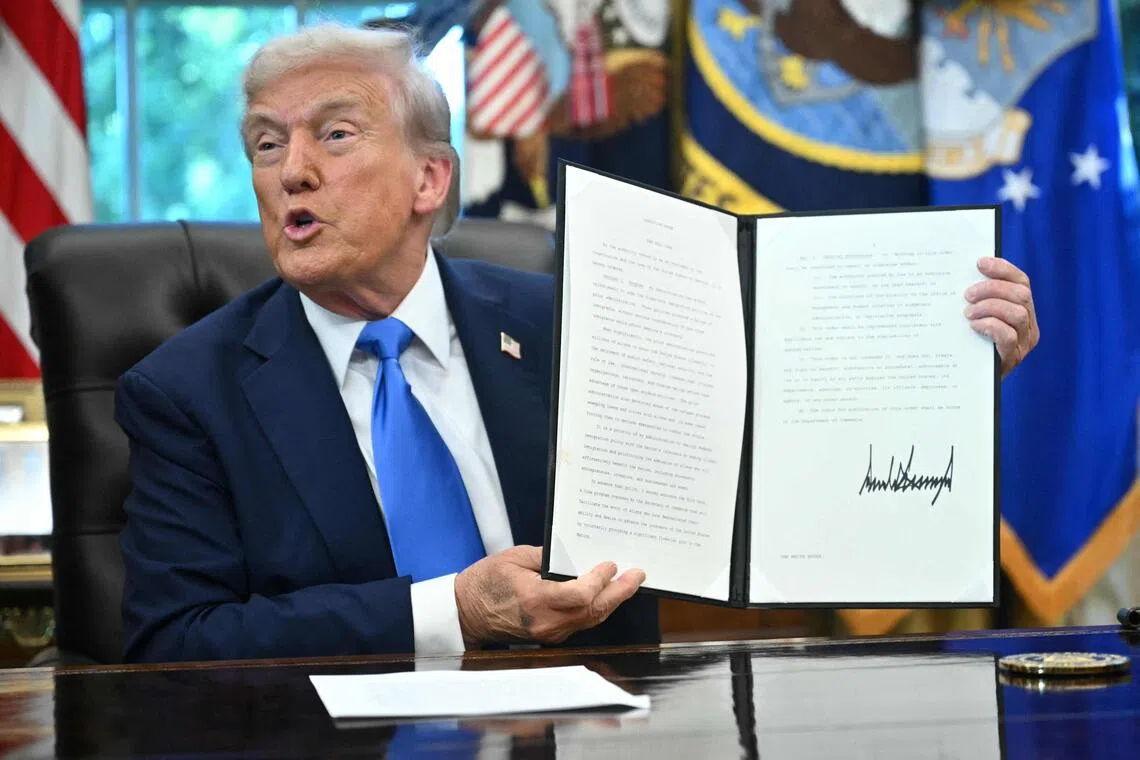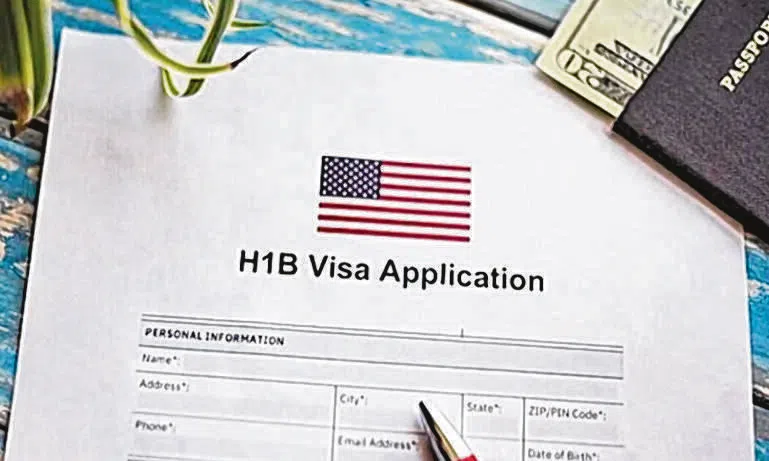Trump’s US$100,000 fee for H-1B visas, a tech industry favourite, concerns India
Sign up now: Get ST's newsletters delivered to your inbox

US President Donald Trump announced the H-1B visa change on Sept 19, along with the introduction of a US$1 million “gold card” US residency programme.
PHOTO: AFP
Follow topic:
- Trump imposed a new US$100,000 fee for H-1B visas, concerning India's IT body Nasscom who fears "business continuity" issues due to the one-day deadline.
- India's foreign ministry anticipates "disruption" for H-1B families, assessing the measure's impact on innovation and wealth creation in both countries.
- Trump also introduced a "gold card" residency programme requiring US$1 million investment, while South Korea assesses related measures' market impact.
AI generated
NEW DELHI - India’s leading IT trade body said on Sept 20 it was concerned by a new annual US$100,000 (S$130,000) fee that US President Donald Trump ordered for H-1B skilled worker visas, an addition that could have major repercussions for the tech industry where such permits are widespread.
The Foreign Ministry in New Delhi also said the measure, which will likely face legal challenges, would cause “disruption” for the families of H-1B visa holders.
Such visas allow companies to sponsor foreign workers with specialised skills – such as scientists, engineers and computer programmers – to work in the US, initially for three years but extendable to six.
The US awards 85,000 H-1B visas a year on a lottery system, with India accounting for around three-quarters of the recipients.
India’s top IT industry body Nasscom said the new measure would hit “business continuity” and was also concerned by the short timeline, with the new fee coming into effect on Sept 21.
“A one-day deadline creates considerable uncertainty for businesses, professionals and students across the world,” Nasscom said.
“Policy changes of this scale are best introduced with adequate transition periods, allowing organisations and individuals to plan effectively and minimise disruption.”
Mr Trump announced the change
“The main thing is, we’re going to have great people coming in, and they’re going to be paying,” Mr Trump told reporters, as he signed the orders in the Oval Office.
India’s Foreign Ministry said the mobility of skilled talent had contributed to “technology development, innovation, economic growth, competitiveness and wealth creation” in both countries and that it would assess the changes.
It said in a statement the new measure would likely have “humanitarian consequences by way of the disruption caused for families”, which it hoped would be addressed by the US authorities.
Not enough home-grown talent
Large technology firms rely on Indian workers who either relocate to the US or come and go between the two countries.
US bank JPMorgan confirmed that a memo had been sent to its employees with H-1B visas advising them to remain in the US and avoid international travel until further guidance was issued.
Tech entrepreneurs – including Mr Trump’s former ally Elon Musk – have warned against targeting H-1B visas, saying that the US does not have enough home-grown talent to fill important tech sector job vacancies.
However, Commerce Secretary Howard Lutnick said on Sept 19: “All the big companies are on board.”

The US awards 85,000 H-1B visas a year on a lottery system, with India accounting for around three-quarters of the recipients.
PHOTO: SHINMIN DAILY NEWS
Mr Trump has had the H-1B programme in his sights since his first term in office, but faced court challenges to his earlier approach, which targeted the types of jobs that qualify.
The current iteration has become the latest move in the major immigration crackdown of his second term.
The number of H-1B visa applications has risen sharply in recent years, with a peak in approvals in 2022 under Democratic president Joe Biden.
In contrast, the peak in rejections was recorded in 2018, during Mr Trump’s first term in the White House.
The US approved approximately 400,000 H-1B visas in 2024, two-thirds of which were renewals.
Mr Trump also signed an order on Sept 19 creating a new expedited pathway to US residency
“I think it’s going to be tremendously successful,” he said.
South Korea’s Foreign Ministry said in a statement on Sept 20 that officials would “comprehensively assess the impact of these measures on the advancement of (South Korean) companies and professional talents into the US market and engage in necessary communication with the US”.
Hundreds of South Koreans were detained during a US immigration raid

